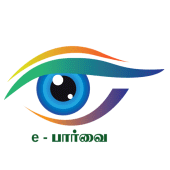e-Paarvai: AI Based Android Mobile App to Detect Cataract
e-Paarvai: AI Based Android Mobile App to Detect Cataract
Shortage of Ophthalmologists
There are over 10 million people in India who are bilaterally blind. In almost 70% of the cases, cataract is the leading cause. Cataract is a condition that causes clouding of the clear lenses of the human eye. Most cataracts develop slowly over time, often depriving the person a chance of salvaging their vision. However, cataracts can be removed surgically and vision can be retained, provided it is detected earlier. And this is where the biggest hurdle arises. India has a glaring shortage of ophthalmologists – there are only 12000 ophthalmologists in India. This makes regular cataract screening a challenge, mainly in rural areas, where access to medical specialists remains a challenge. Roughly, there is one opthamologist for every 250000 people in rural areas.
As a result, several cataract cases go undetected leading to unavoidable blindness. The National Programme for Control of Blindness & Visual Impairment (NPCBVI) shows that out of the over 10 million patients registered on the national platform, almost 99% of them have been reported for cataract disease. Now, if we are to screen these 10 million patients with the available ophthalmologists, it will take years, considering the current ophthalmologist to population ratio in rural India (1:250000).
e-Paaravai: AI-based Cataract Detection
 To overcome this obstacle and for efficient detection and screening of cataracts, the Tamil Nadu eGovernance Agency (TNeGA) has developed an intelligent mobile application leveraging AI to identify the presence of cataracts in the eye of the person being screened called e-Paarvai. TNeGA, which is a State Nodal Agency responsible for driving all technology initiatives for the Tamil Nadu Government, develops low-cost technology-enabled scalable solutions in critical sectors such as education, healthcare and agriculture.
To overcome this obstacle and for efficient detection and screening of cataracts, the Tamil Nadu eGovernance Agency (TNeGA) has developed an intelligent mobile application leveraging AI to identify the presence of cataracts in the eye of the person being screened called e-Paarvai. TNeGA, which is a State Nodal Agency responsible for driving all technology initiatives for the Tamil Nadu Government, develops low-cost technology-enabled scalable solutions in critical sectors such as education, healthcare and agriculture.
The e-Paaravai was created by, when the Blindness Control Society of Tamil Nadu reached out to TNeGA and informed about the staff shortage. As a result, TNeGA has created an AI solution which is very effective for routine diagnosis especially in environments that are stretched for resources.
The solution is built leveraging computer vision technology and the AI model is rolled out using an Android App where the field workers capture the eye of the patient using their smartphone. The model then predicts whether the eye has a Mature Cataract, Immature Cataract, IOL or No Cataract. With doctors already overwhelmed with work following an analytics only based approach would have put more pressure on the doctors and delayed the entire screening process. Therefore, AI was chosen as a crucial element in the solution.
The system is designed in a way that any primary healthcare worker and download and set it up in 5-minutes. The fieldworker downloads the application on their smartphone and captures the eye of the patient, which is then analysed by the AI and sent to a centralised district-wise dashboard where the District Medical Officer receives the screened patient details for further action, in most cases a surgery. Furthermore, the Tamil Nadu State Control Blindness Society is tasked with ensuring 30 days for clearing any of the cataract detection submitted to the dashboard. Currently, the AI model has an accuracy of 91%. When it comes to the technical side, the solution that was developed with a vendor is state of the art.
The development of e-Paarvai was not without any challenges. Since the e-Paarvai app was developed on free-hand eye images taken from the smartphone, finding such a dataset was the biggest challenge. And as a result, the entire training dataset had to be created from scratch. Furthermore, the system adheres to the TAM-DEF (Transparency & Audit, Misuse protection, Digital divide & Data deficit, Ethics, Fairness & Equity) framework (Tamil Nadu AI Policy 2020) of governance.
The e-Paarvai app is currently being used by the Tamil Nadu State Control Blindness Society (TNSBCS). Since the launch of this application in February 2021, the system has been rolled out to more than 14 districts and have screened more than 1280+ patients in the various rural areas of Tamil Nadu.
India houses over 10 million blind people and 2 out of 3 cases may well have been prevented if diagnoses were timely. In low-income groups, general apathy and lack of knowledge are major hindrances to the early diagnosis of cataracts. This technology is showing promising results and the impact will result in much better public services delivery that helps in early diagnosis, prioritising cases that eventually leads to the prevention of blindness.
The e-Paarvai app is poised to help the 20 million residents of Tamil Nadu aged 50+, who are most susceptible to developing cataracts. However, this solution can just as well be implemented across states, essentially limiting the burden on the healthcare system and reliance on limited numbers of ophthalmologists.
Source: INDIAai
Last Modified : 8/23/2022
Basic information eye care, eye related problems a...
This topic covers the information related to Disab...
This topic explains about the National Programme f...
This topic provides information about the paramete...
